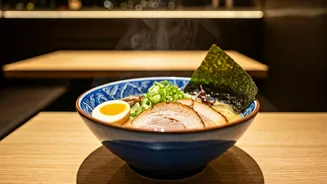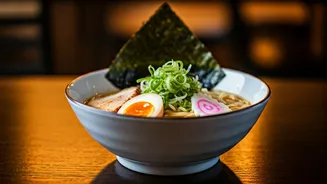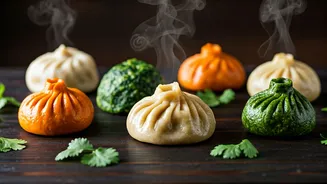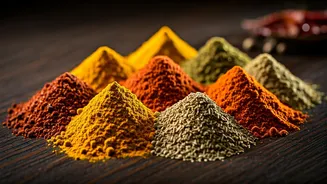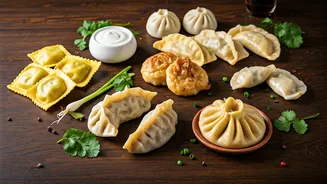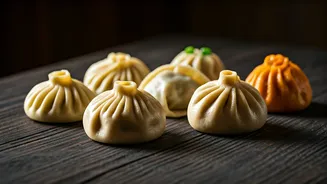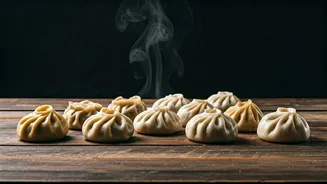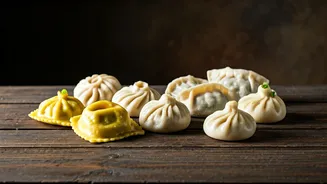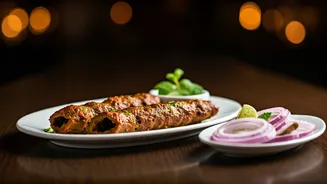East Asian Invasion Begins
The influence of East Asian flavors is dramatically reshaping the culinary scene within Delhi. Dishes hailing from countries like Japan and Korea are no
longer novelties; they're becoming integral to the city's gastronomic landscape. This culinary shift is apparent in the increasing availability of East Asian ingredients and prepared foods in local stores. Restaurants are prominently featuring ramen, kimbap, and various tofu preparations on their menus, reflecting a growing consumer interest. Home cooks are also embracing these flavors, experimenting with new recipes and incorporating East Asian elements into their daily meals. This widespread adoption suggests a deep cultural exchange, where Delhi residents are readily accepting and adapting to the culinary offerings from the East.
Ramen and its Rise
Ramen, a Japanese noodle soup, has carved a significant niche for itself in Delhi's dining experiences. Its rise in popularity can be credited to several factors, including its versatility and comforting nature. Initially, ramen was found primarily in specialized restaurants. These establishments focused on authentic preparations, often importing ingredients and adhering to traditional cooking methods to ensure the flavors were right. Gradually, ramen's popularity expanded to encompass a wider range of dining settings, and it started to be featured in more mainstream eateries. This diversification allowed ramen to reach a broader audience, exposing more people to its rich and savory qualities. The availability of diverse ramen varieties, from classic tonkotsu to modern vegetarian options, caters to different tastes, further accelerating its acceptance and proliferation.
Kimbap's Korean Influence
Kimbap, the Korean seaweed rice roll, has also found a solid foothold in Delhi's food scene. Its rise can be linked to the rising popularity of Korean culture, including its television dramas and music, particularly amongst the youth. The simplicity of kimbap, both in terms of preparation and consumption, has made it a convenient and appealing option for busy Delhi residents. Its adaptable nature also works well with local ingredients, making it easy for restaurants and home cooks to adjust the flavors. Kimbap’s availability in various forms, from classic fillings to innovative variations, has made it a popular choice. This has allowed kimbap to seamlessly merge into Delhi’s culinary diversity, contributing to the rich food culture already existing in the city. The convenience, combined with the taste and cultural allure, has made kimbap a favorite amongst Delhi's food enthusiasts.
Tofu's Health Appeal
Tofu, a versatile soybean curd, has established itself as a valuable ingredient across Delhi’s diverse food offerings. Its health benefits, including its high protein content and low-fat profile, have strongly resonated with health-conscious consumers. Tofu has seamlessly found a place in both vegetarian and vegan diets, making it a valuable addition to food preparation. Initially, tofu was often seen as an ingredient in specialized East Asian dishes. However, it quickly gained wider acceptance, with chefs and home cooks integrating it into a broad spectrum of recipes. Tofu can be adapted to absorb a range of flavors, which adds to its flexibility. Its adaptability means that tofu can be incorporated in soups, stir-fries, and even desserts, making it a flexible ingredient. The growing embrace of tofu highlights the overall impact of health trends on culinary choices in Delhi.
Cultural Fusion Explored
The integration of East Asian flavors into Delhi’s food scene reflects a broader trend of cultural fusion and exchange. As Delhi becomes more connected with the global community, people have developed a greater interest in exploring different cuisines. This interest is not limited to trying new foods; it also includes understanding their cultural origins and the stories they tell. The success of East Asian cuisine in Delhi is a testament to the city's ability to embrace diversity and adapt culinary traditions. The availability of East Asian ingredients in local markets makes it easier for people to try and experiment. This fusion encourages creativity and helps to diversify the city's culinary landscape. This ongoing culinary exchange enriches the dining options and strengthens the city's cultural identity.
